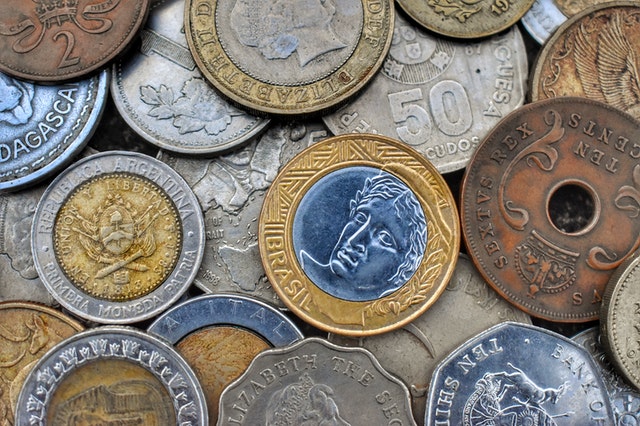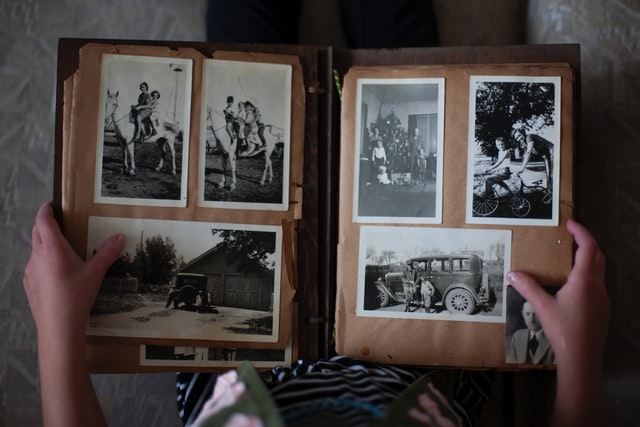From coins and stamps to baseball cards and action figures, people have always had an affinity for collecting different objects. The concept of creating a collection isn’t new. In fact, humans have been collecting likely for as long as we’ve been in existence. The instinct to “hunt and gather” could explain our love of collecting. No matter what the reason is, if you have a favorite collection, it’s important to make sure that you’re displaying it in the best way possible.
Whether it’s coins, dolls, or vinyl records, read on to learn a few interesting facts about your collections and tips on the best storage methods to keep them in mint condition.
Coins

Coins are perhaps one of the most popular collectibles of all time. Here is some information about coin collecting, the best collection storage options, and more.
History of coin collecting
The use of coins as currency can be traced back as far as 650 BC. Originally, collecting coins was thought of as hoarding rather than just collecting them for the simple joy of doing so. However, by the 17th and 18th centuries, the study of coins (called numismatics) began to appear as an academic course. Over the centuries, people started to collect and display coins from all time periods and from all over the world.
Types of coins
People collect coins for different reasons. The main types of collectors include those who appreciate the history of coins, those who collect them for their unique designs and beauty, and those who collect coins as a future investment. You can collect vintage or rare coins, foreign coins, or U.S. coins — or you can collect a few of all of them.
How to store and display your coin collection
To keep your coins in good condition, it’s best to leave them in the original clear plastic coin holder whenever possible. Minted coins (those that are never touched by human hands) should remain in their original holder. If you have vintage coins, display and store them in a coin album with a folder. Many of these albums have information about each coin so you can easily find and identify specific coins when you need to.
How to take care of your coin collection
Circulated coins can be gently cleaned in distilled water and dried with a microfiber cloth. When handling coins, it’s best to wear lint-free gloves so that the oil from your hands doesn’t destroy the relief or finish of the coin. Ideally, the best way to care for your coins is to keep them permanently stored or on display once you have your collection set up. The less contact the coins have with human hands, the better condition they’ll be in down the road.
Stamps

Collecting stamps is a favorite pastime for many, and here’s how you can care for your own collection.
History of stamp collecting
Stamp collecting became a thing around 1840, when the first postage stamps were used. However, it really gained traction in the U.S. in the mid-1850s. By the 20th century, stamp collecting was a fun and popular hobby for children and adults alike. Stamp enthusiasts started to hoard their favorites, and the art of stamp collecting for fun and profit was born.
Types of stamps
Many people collect stamps based on their location, era, artist, or even the color of the stamps. Whatever way you choose to collect stamps is up to you, but many collectors prefer to look for rare stamps that have some monetary or resale value. Perfect stamps with brilliant color, precise centering, and in-tact gum are rated as “superb” and tend to be worth more.
How to store and display your stamp collection
A stamp album is a classic way to store, display, and maintain your collection. Make sure the album is specifically made for stamps, and always keep them at room temperature away from humidity and excess moisture. You can also display your favorite stamps in a frame or special card.
How to take care of your stamp collection
Never let your stamps get wet, since moisture will ruin them. Keep them in a cool, dry place out of direct sunlight. Try not to touch your stamp collection with your fingers, since the oils can damage the ink or gum backing. Mount stamps using special stamp hinges, or place them in clear plastic sleeves to protect them.
Vinyl Records

Music lovers appreciate a great record. Here’s the best way to store your vinyl collection to keep your tunes in great condition.
History of vinyl record collecting
Vinyl records go way back to the 1800s, and they soon became a popular way for people to keep recordings of their favorite music. Collecting vinyl is an art that takes a lot of hunting, especially if you’re looking for something rare. After the invention of the compact disc in 1982, vinyl started to slowly disappear. Today, it’s making a major comeback for collectors and music fans alike.
Types of vinyl records
You can find vinyl in different sizes, including 12” albums and singles. The 7” vinyl is another popular record that typically contains a single song on each side or a short EP. Other types of vinyl include colored, B-sides, imported, and pressed vinyl.
How to store and display your vinyl record collection
To create an awesome vinyl collection display, put your favorites in special frames, cabinets, and hang them on the wall. You can also store them in record storage crates, on shelves, or in special wall-mounted display racks.
How to take care of your vinyl collection
If your records come with a dust sleeve, leave it on to protect the cover. Never get your vinyl wet, and don’t display it in areas with direct sunlight, which can cause the vinyl to warp and the record cover to fade or discolor. Try to keep vinyl at room temperature in areas with moderate humidity. Never store records horizontally, or the weight will eventually cause them to warp over time.
Mugs

Whether they’re for tea or coffee, mugs are another popular collector’s item. Here’s how to take care of your collection the right way.
History of mug collecting
The first mugs date to the Stone Age, when people made drinking vessels from animal bone. Over the centuries, mugs made of ceramic, clay, and glass have become the most common way to drink coffee, tea, and other hot beverages. People collect mugs due to the vast range of designs, colors, and themes available.
Types of mugs
Mugs vary in size, maker, and theme. Starbucks mugs are a popular collector’s item, since most come in limited runs like their popular “been there” collection, which encourages people to keep a customized souvenir of each trip: the mugs come in different designs depending on the city and the country that you visit. Other types of mugs people collect include souvenir mugs with travel themes, mugs in different sizes and shapes, and handmade mugs created by artists.
How to store and display your mug collection
The best way to create a mug collection display is by placing them in a row on a sturdy shelf or inside a cabinet with clear glass doors to protect them from dust. You can also hang mug racks with hooks on the wall, or simply store and display your favorites on your kitchen countertops.
How to take care of your mug collection
To care for your mugs, make sure that you only wash and dry them by hand. Different materials require different care. Handmade and ceramic mugs should never be frozen, or they can crack. Clean copper mugs with mild soap and water, and dry them twice before storing them. Keep your mug collection away from direct sunlight and extreme temperatures, and store them in an enclosed display to reduce dust buildup.
China Sets/Fine China

Fine China and specific China sets are popular collector’s items. Make sure you take good care of your China by following these tips.
History of China collecting
Pottery and China are ancient crafts that have long captured the human imagination. Collecting China as a hobby became widespread around the 17th century in Europe, when imported items began to come into the continent from Asia. Since then, collecting sets of China has been a favorite hobby for many people all over the world.
Types of China
China types include earthenware, bone china, porcelain, and stoneware. Fine China refers to products that use translucent materials to give them a more elegant look. This type of China is the most valuable, yet it’s extremely durable and oven, microwave, and dishwasher safe.
How to store and display your China collection
A classic China cabinet with a hutch is the best way to show off your favorite China collection. You can also store pieces in a buffet cabinet to keep them free of dust and damage. Look for special shelving you can use to display your favorite China pieces on the walls for a beautiful piece of décor. Just make sure the shelves have a special ledge to keep plates from slipping off and falling onto the floor.
How to take care of your China collection
Wash China by hand using warm, soapy water. Avoid cleaning China in the dishwasher, since it can damage the finish or potentially cause breakage. Keep China sets clean by putting them in an enclosed hutch or cabinet to reduce dust. Always keep your China away from the edge of tables and counters so they don’t accidentally fall off.
Dolls and Toys

From antique baby dolls to Japanese action figures, here’s more information about caring for your toy and doll collections.
History of doll and toy collecting
Wood dolls were given to children as toys back in the 1500s, and they eventually developed into popular items for kids by the 1700s to the late 1800s. People love to collect dolls and other toys for nostalgic reasons and for the fun culture that surrounds these iconic items. Television helped to propel the popularity of toy collecting, thanks to the invention of action figures and other character-themed toys.
Types of dolls and toys
Most dolls are separated by era — antique, vintage, and modern. The type of dolls you collect can depend on the material it’s made of and where the doll was manufactured. For toys, the types range from cars and figurines to stuffed animals and electronic toys. Games are another niche that’s popular with many toy collectors.
How to store and display your dolls and toys
Keep your dolls and toys on display shelves so they’re easy to see. Wall shelving is a good option, or you can use an enclosed curio cabinet for older toys and dolls. The key is to keep them away from direct sunlight and display them in areas with a reasonably stable temperature and humidity level.
How to take care of your doll and toy collection
If your toy or doll comes with its original box, it’s best to store it there to protect it. When cleaning vintage or antique toys and dolls, it’s best to consult with professionals. Getting certain materials like fabric or cellulose wet can cause discoloration and damage to older toys. Avoid smoking near your dolls, as this can cause permanent stains and odors.
Baseball Cards

Collecting baseball cards is one of America’s favorite pastimes, just like the game itself.
History of baseball card collecting
Baseball cards have been around for decades and became a popular collector’s item in the 1950s. Card production and collection reached a peak in the 1980s, but it remains a popular collector’s choice today. Autographed cards are always worth more, as well as rare cards that are out of print and difficult to find. Specific players are often worth more depending on their history and background.
Types of baseball cards
Most baseball cards showcase a specific player, but they can also feature an entire team. The player, team, season, and condition of the card all play a role in the card’s value. Famous players like Babe Ruth will bring in a lot of money, as will autographed baseball cards by specific teams or players. A card in mint condition is worth more than cards with damaged edges or fading images.
How to store and display your baseball card collection
Most baseball card fans like to display them in special albums with clear plastic covers or sleeves. You can also store and display your favorite cards in clear acrylic containers. If you have an especially valuable card, it’s best to keep it secure in a safe under lock and key.
How to take care of your baseball cards
Always keep baseball cards out of direct sunlight, and never laminate your cards. Store them in special storage boxes or binders so that no card is touching another. Plastic sleeves can protect your cards from damage as long as they’re designed for sports cards. Don’t store cards in a place without climate control, or the humidity or dry air may severely damage them.
Vintage Items

Whether it’s clothing, toys, or pop culture memorabilia, there’s a huge market for collecting vintage items.
History of vintage collecting
Collecting things from the past is an ancient practice that goes back to Mesopotamia. People have always been fascinated by items from yesteryear, which is why collecting vintage goods is still such a popular hobby today. You can collect specific vintage items, like clothes or toys, or you may just be a fan of all things vintage and collect several categories at once.
Types of vintage collections
Most vintage collections are categorized by decade. For example, atomic era collectibles are usually from the 1950s, while pop culture is a common collection for items in the 1980s and 1990s. People enjoy collecting vintage costume jewelry, designer handbags, lighting, doorknobs, dishes, toys, clothing, and more, based on their favorite era or the appearance or value of certain items.
How to store and display your vintage collection
As a rule of thumb, vintage collectibles are best stored and displayed in cabinets with protective doors, like a hutch. You can display vintage clothing and jewelry on mannequins as long as they’re stored the right way. Wall shelving is another easy way to organize and display your favorite vintage objects.
How to take care of your vintage collection
The material of your collectibles will determine how they should be cleaned and cared for. Overall, it’s best to keep vintage items out of sunlight and in a climate-controlled environment. Keep your collectibles in a place where they won’t get broken or damaged.
Whether you love the idea of collecting stamps and coins from around the world or you’re a music buff who loves vinyl records, creating your own collection is a fun hobby that will never go out of style. Learn the history of your favorite collectibles and what types of categories are available to help you find the rarest and most valuable pieces. Always store, display, and care for your collection in a way that protects it so that you can enjoy your favorites for many years to come.




